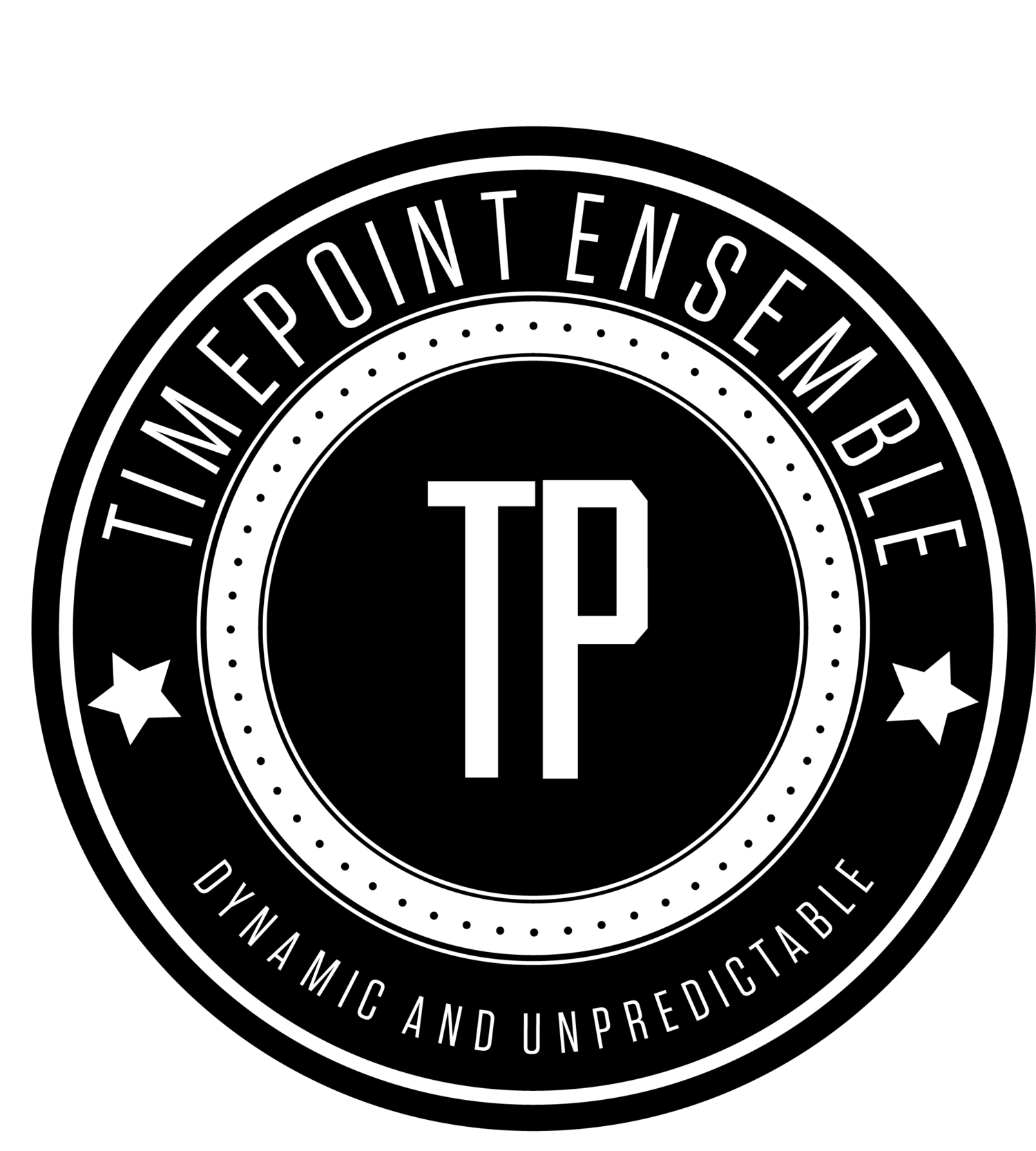The Timepoint Ensemble keeps performing, so I keep leaving the house to go see them, and writing is a dying industry, so I might as well get more involved in it by doing another Timepoint review. This time around, it’s for the Timepoint Party, a joint gig with members of the Calgary Jazz Orchestra that was hosted in the basement of Commonwealth.
The casual environment of the venue was nice. Performers were not separated from the audience by a stage, instead playing directly on the floor. The audience moved around freely, some conversing, listening, and ordering drinks from the bar. It really put into the question the necessity of the usual pretensions of a classical music performance, where the audience sits in somber silence while the ensemble performs. You might still go to a performance by the CPO with someone, but it’s still a relatively asocial experience compared to a set in a bar, where you won’t get frowns and glares for making a comment about the music to your friend.
Timepoint performed a set of impressively complex music, giving justice to their name, executing constantly shifting rhythmic motives and time signatures, mostly featuring works by Ted Hearne. The evening began with 23 by Hearne, and Electric Counterpoint by Steve Reich. Both pieces pull you in and out of a dream-like state, developing subtly through repetition. Maybe it was the beer, or maybe it was the hypnotic quality of minimalism, but the first half of the concert definitely left me with a nice light buzz.
In-between halves, members of the Calgary Jazz Orchestra formed a quartet and took the stage (so to speak) to perform some harmonic and temporal twists on some tunes by Ornette Coleman, Horace Silver, John Coltrane, and something they apparently made up on the spot. As the night wore on, more and more people began to trickle in from upstairs, which was actually pretty nice because I think most of the newcomers were at least curious enough about the music to still give it a listen. You can do some pretty crazy things with jazz tunes, but ultimately I think the average listener is still going to be able to make out a general song structure and still be able to enjoy it.
Unfortunately, when the concert resumed with a combined ensemble of CJO members and Timepoint, the crowd had grown far too large and loud to enjoy the concert from where I was sitting, so I had to move closer. Ironically, the venue served as a cruel reminder as to why we can’t have nice things, and made me reflect once more on the pretentious conventions of a classical music performance as I struggled to hear much even from my new position directly in front of the band.
The idea of taking a more casual approach to live music performances isn’t something I think should be discarded because of one bad experience; I’m sure a happy medium can be achieved. In a similar venue, a concert attended mostly by people who were actually there to hear the music would have done well, but I think as more of the general public came down, it was harder to manage. Who knows, maybe with more amplification, ensembles could just play over the noise and subject a rowdy crowd to music they wouldn’t have otherwise listened to, potentially developing a new interest.
But let’s be real, most people just go out looking to fuck.
